Ruins, Routines, and Really Good Coffee: Volterra Week One
On May 3rd, 2025, after a long journey, all of us SACD students finally arrived in Volterra! Located in the Tuscany region of Italy, Volterra (originally known as Velathri to the Etruscans) is a small walled hilltop town that dates back to before the 8th century BC. Staying in Volterra while learning about how it evolved over time has already been such an inspiring experience. Volterra was built by the Etruscans and later shaped by Roman and Medieval influences, meaning the town has so many layers of history, and we’re just starting to unravel them.
Our first week here has been a bit of an adjustment from figuring out local transportation to balancing our course schedules, but it’s been exciting, to say the least. The Saturday market is amazing, offering so many items, from clothing to fresh produce. And yes, we have been fueling ourselves with plenty of coffee. There’s a café right across the street from where we’re staying, and it’s quickly become our go-to spot. Not only is the espresso fantastic, but we’ve also been practicing our Italian by ordering and chatting with the staff and community. Now, back to business. We’ve officially begun all of our classes: Design Studio, Italian Language and Culture, Social History of Art in Italy, Urban Sketching, and Alabaster Workshop. We’ll be sharing more about each class in future posts, but for now, we want to highlight some of the incredible things we’ve already seen and learned!

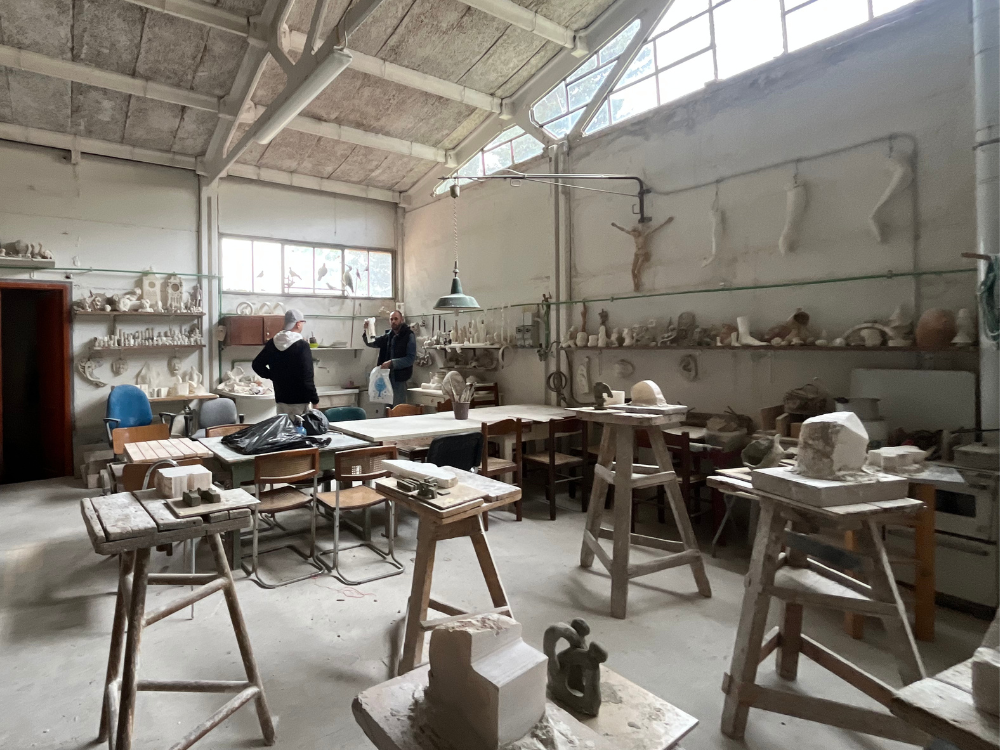
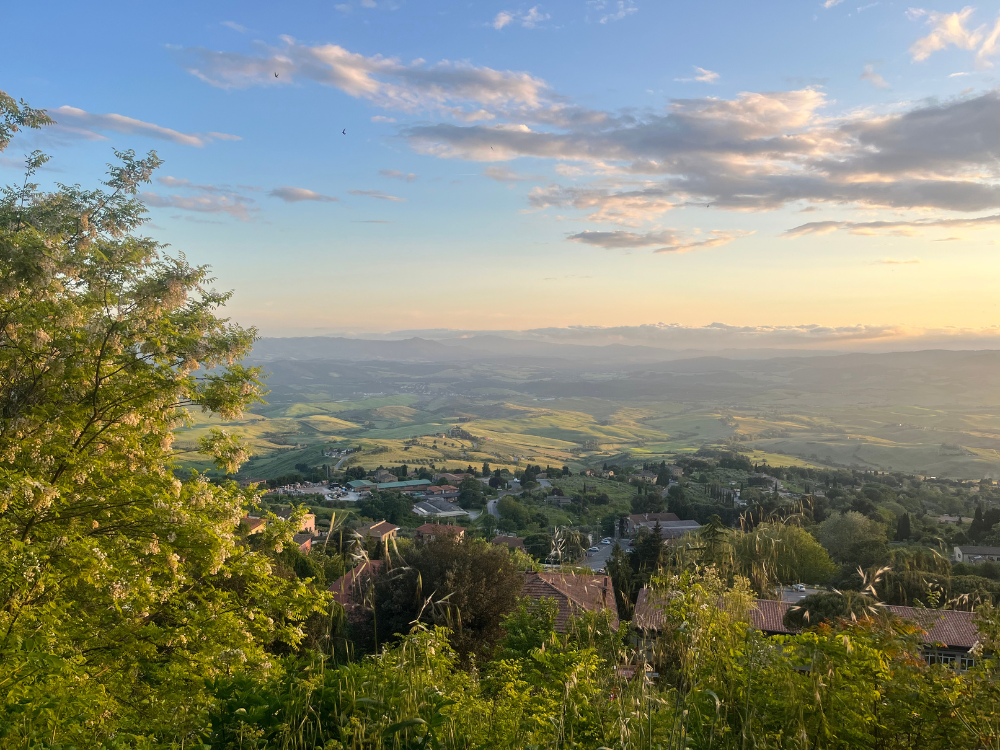
In our Italian Language and Culture course, we’ve gone straight to the roots, back to the Etruscans. One of our first class adventures was to the Guarnacci Etruscan Museum in Volterra, where we explored the history behind the Etruscan funerary urns. Did you know that each figure depicted on an urn holds an object typically used during a banquet? The Etruscans enjoyed life, and these objects symbolized the importance of celebration in the afterlife. Interestingly, every figure reclines on their left side, which was believed to aid digestion. Traces of Etruscan heritage are still visible throughout Volterra, from the massive Etruscan walls to decorative elements on buildings, as well as the Porta all’Arco, which is the stone entrance archway that dates back to the 4th century BC and is still one of the town’s ancient entrances.
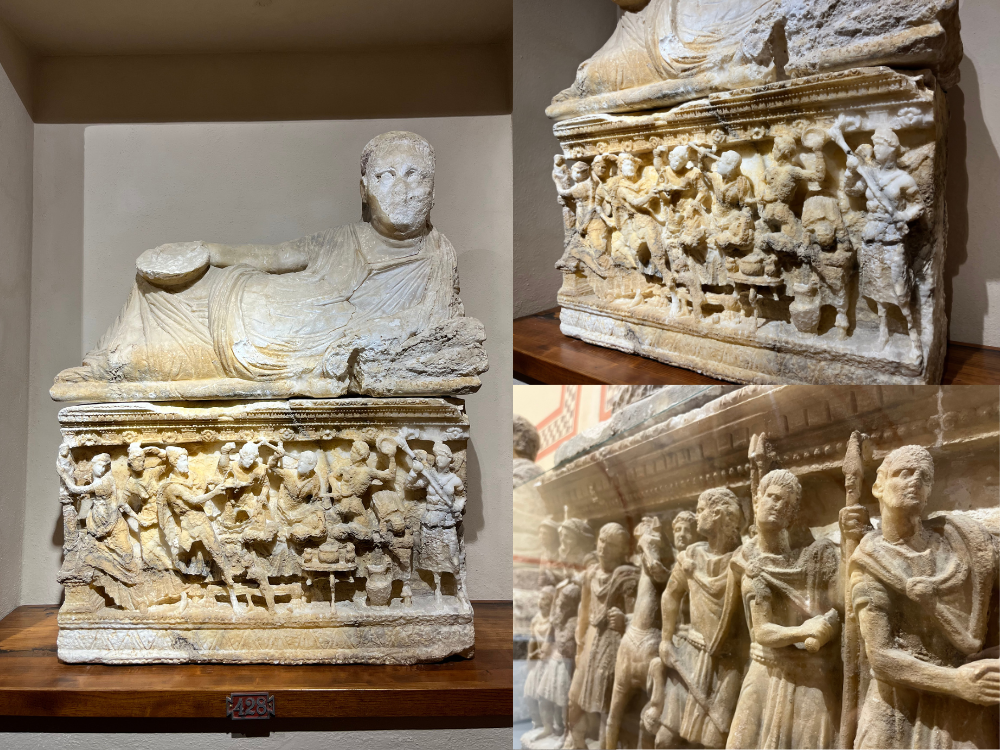


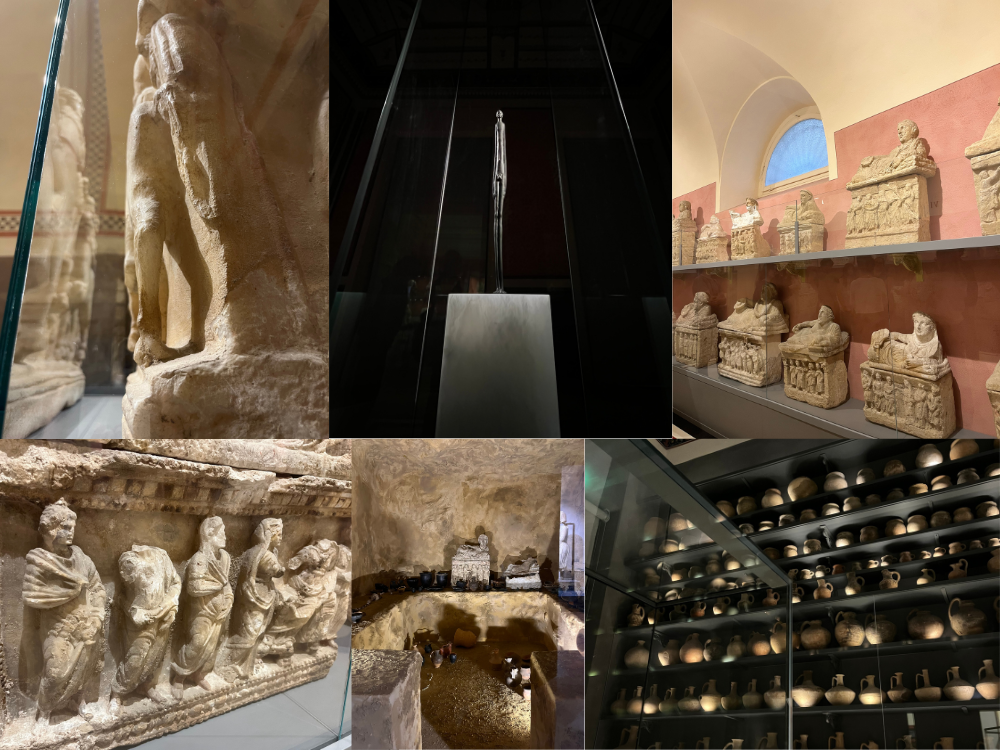
In our Social History of Art class, we visited the Acropoli Etrusca, an archaeological site located on a hilltop. It was the highest point of the city, often used for temples and other religious structures. There, we explored the remains of two ancient Etruscan temples, one of which still shows traces of its stone foundation and altar. Visiting these sites gave us a deeper understanding of Etruscan spiritual life and early urban planning. The Acropolis also shows an amazing view of the countryside. Being up there was one of the many moments that made us stop and realize how unique this experience is.
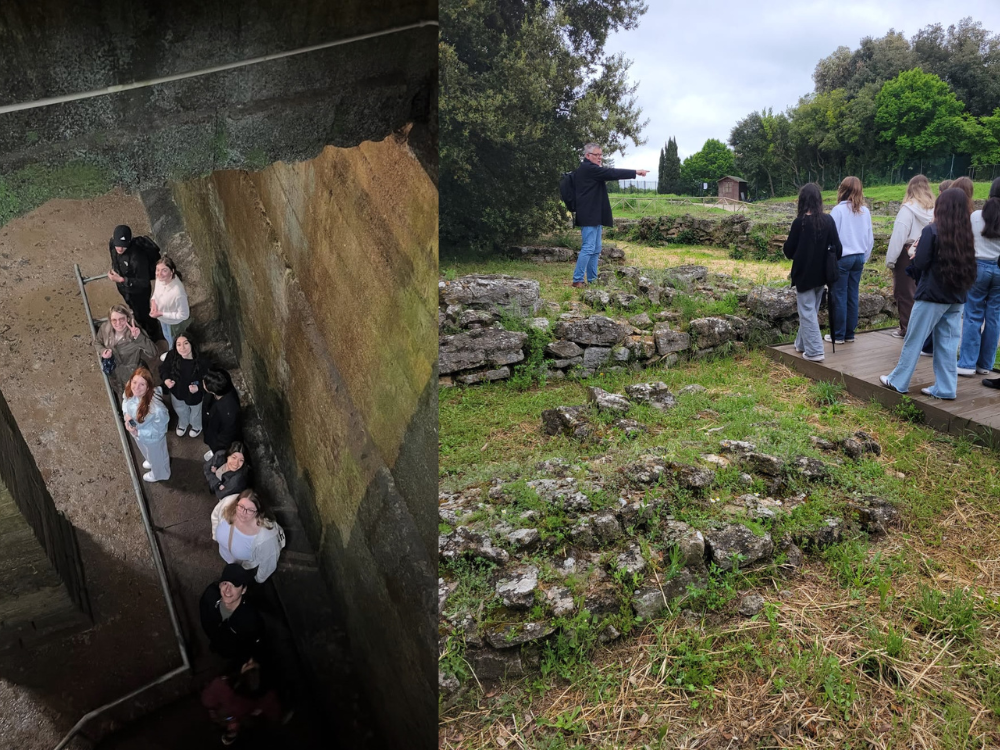


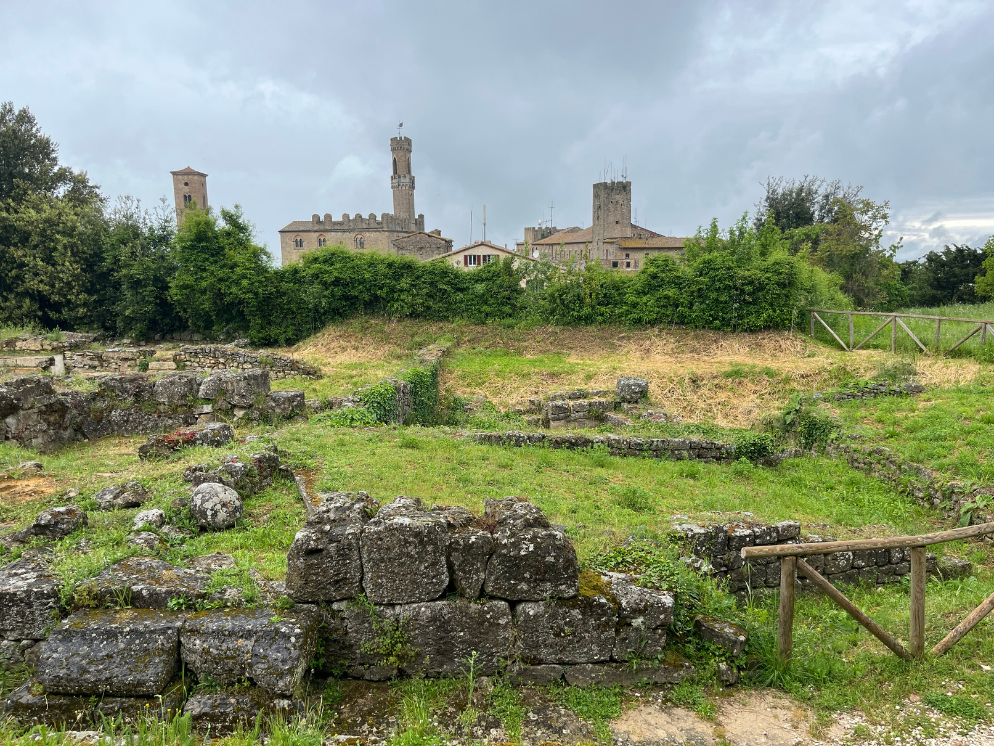
One of the most memorable highlights of the week was visiting the excavation site of the Roman Amphitheatre, which is an area currently closed to the public. We had the incredible opportunity to observe the ongoing archaeological work firsthand and learn about the amphitheatre’s structure, its social role in Roman times, and the types of performances and gatherings that once took place in this space. It’s one thing to study ancient architecture in a classroom, but standing on-site and seeing history literally being uncovered is something else entirely.

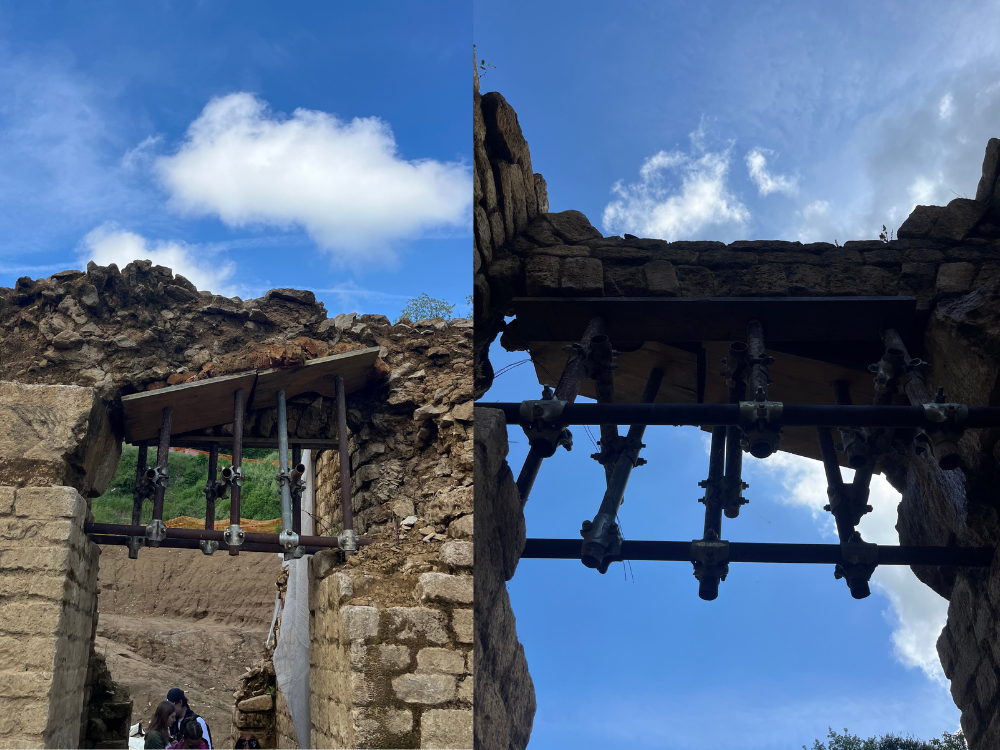



As we wrap up our first week in Volterra, we’re overwhelmed, but in the best way possible. With every step through the sandstone-paved streets or glance at the beautiful spring skyline, we’re reminded why we’re here: to learn from the past in a place where it’s still very much alive. We can’t wait to share more about our classes, excursions, discoveries and student stories in the weeks to come and don’t worry, I’m writing it all down.
Your behind the scenes storyteller,
Daria Facchinato
